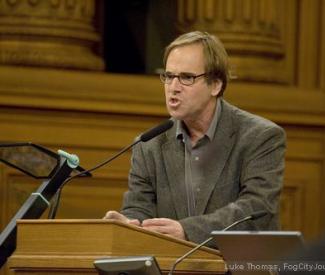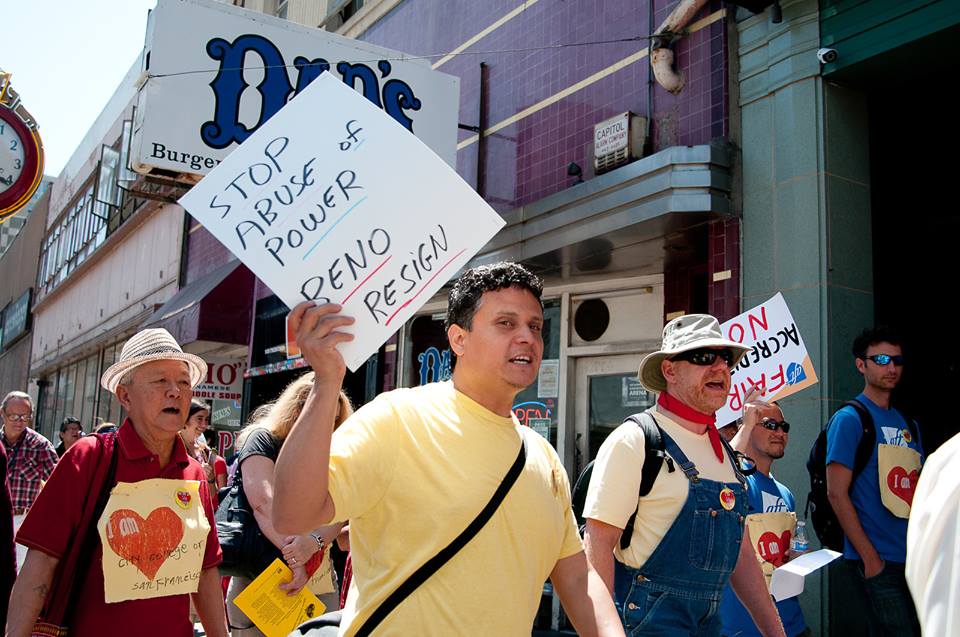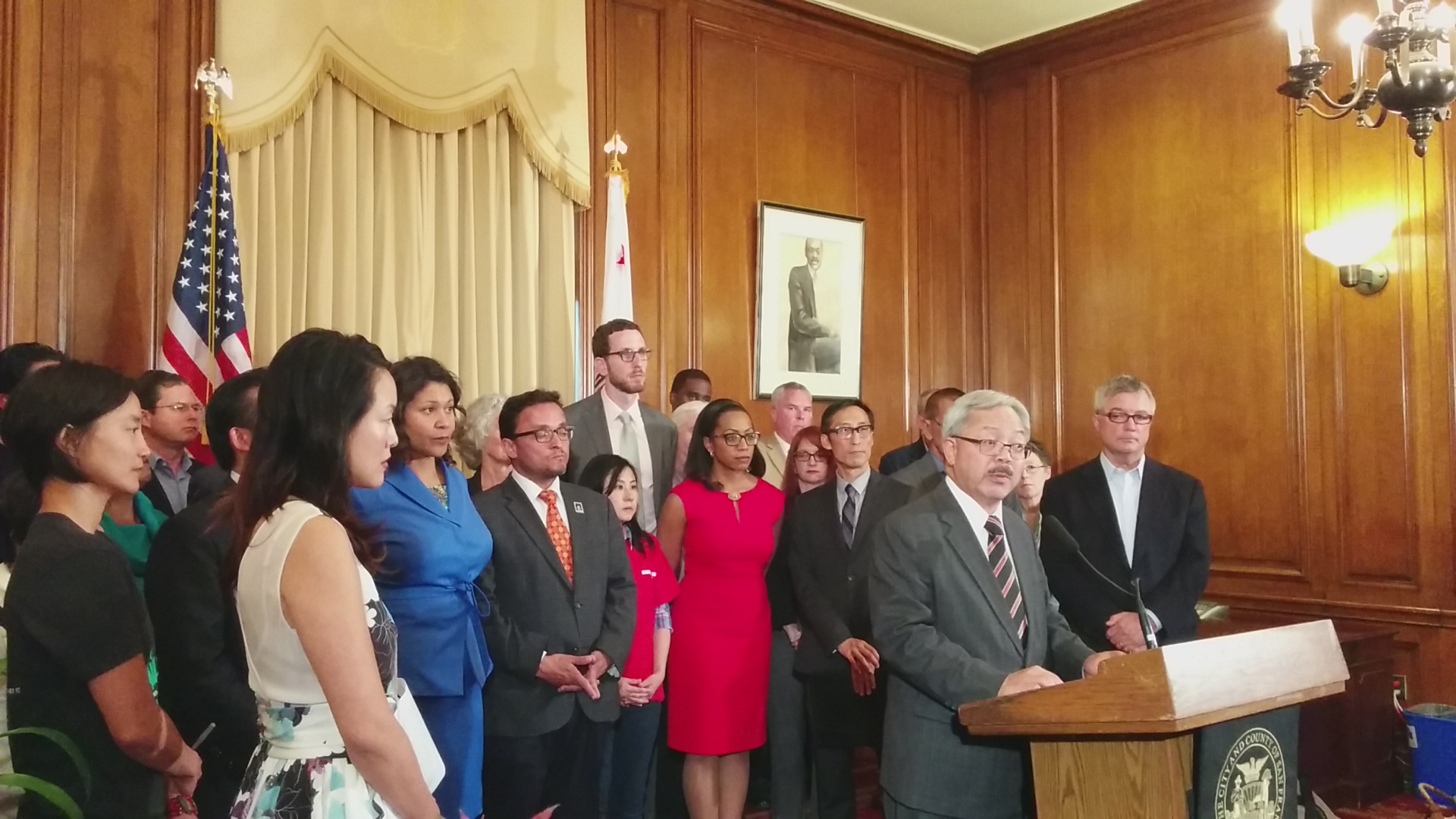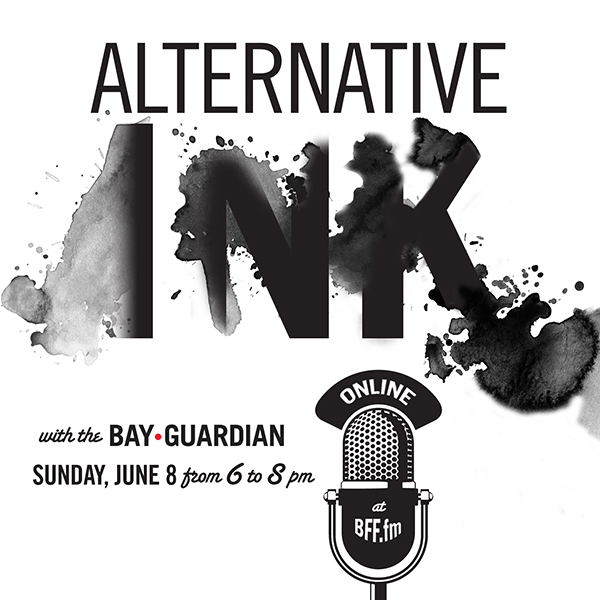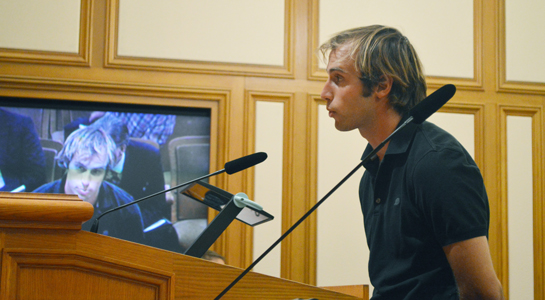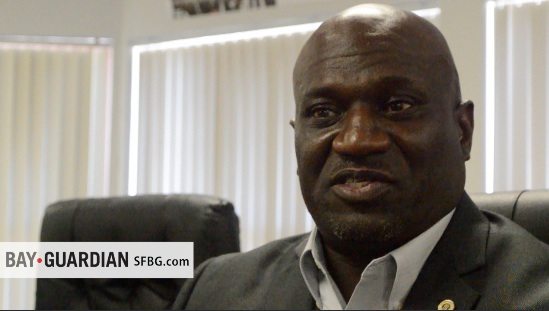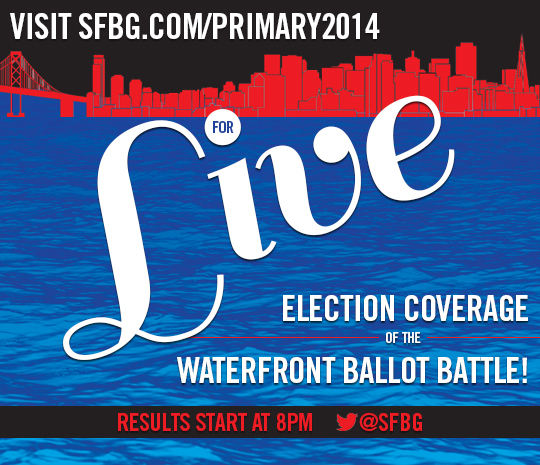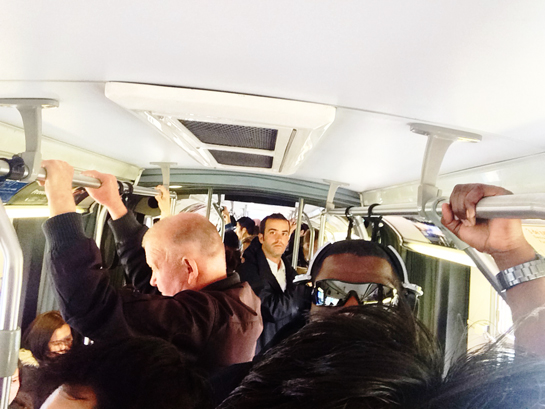NOTE: This post has been updated from an earlier version.
Right down to the wire, a complaint filed with the San Francisco Ethics Commission today [Tue/3] – election day – alleges that Democratic County Central Committee elected chair Mary Jung authorized phone calls that were meant to deliberately confuse voters on Proposition B.
The ballot measure, which would require voter approval for waterfront height limit increases, is officially backed by a committee called “No Wall on the Waterfront, Yes on B.”
But according to the Ethics Commission complaint, opponents of Prop. B falsely portrayed No Wall on the Waterfront as being against Prop. B in a bid to confuse voters.
A transcript of the call included in the complaint notes that a live caller opened the communication by saying, “I’m calling about the No Wall on the Waterfront Campaign,” without saying they were calling in opposition to that campaign, and seemingly posing as being affiliated with it. Callers also made statements such as, “Prop B is about environmental loopholes, against affordable housing,” and “No on B endorsements — the Democratic Party, Alice Toklas democratic club, labor.”
“This act by Ms. Jung was a devious and deceptive plan to trick San Francisco voters,” complainant Geraldine Crowley, formerly a DCCC member herself, charged in the filing. “While I realize she employed as a highly paid lobbyist for the San Francisco Association of Realtors – who oppose Prop. B – it crosses the line for Ms. Jung to violate the ethical codes and San Francisco law in this manner.”
We reached Jung by leaving a message on her phone line, listed on the San Francisco Association of Realtors website, next to her job title: “Director of Government and Community Relations.” (Which is really a very convenient arrangement for the real-estate crowd, when you think about it. Who better to relate to the “community” and the “government” than the chair of one of the most politically influential organizations in town, which endorses candidates for elected office?)
When she called us back, Jung confirmed, “We were calling people to vote No on Prop. B.” But what about the allegation that those calls were intentionally deceptive, falsely painting No Wall on the Waterfront as being against Prop. B? “I have not seen the complaint,” Jung told us. She added, “I don’t have a copy of the script” used by callers when they contacted voters. To get a copy of the script, she said, we would have to call political consultant Eric Jaye, who is handling communications for the opposition to Prop. B. We tried calling Jaye but couldn’t reach him.
[UPDATE: Jaye just returned our call. He said Crowley’s complaint is “frivolous” because the callers said they were calling “about” the No Wall on the Waterfront Campaign. “This was what they named their campaign,” Jaye said repeatedly. “It’s not deceptive.” But we asked him multiple times if he would provide a copy of the full call script, and he refused to do so, without offering any reason why he couldn’t.]
What’s more, according to Crowley’s complaint, is that the paid phone calls to DCCC members appear to have originated with venture capitalist Ron Conway, who made a $25,000 donation to the DCCC on May 30. A few days later, Ethics Commission filings show, Jung authorized expenditures totaling $12,281.13 for “membership communication calls.”
Jung denied having had any conversation with Conway about it, and said “the Democratic Party has done a lot of fundraising in the past three months,” and that she could not link a specific donation with a specific DCCC expenditure. She then said she had to go.
Officially, “you can’t give to the party and officially say the donation is for some purpose, but anyone who’s worked in San Francisco politics knows … it’s designed to make something happen,” said Jon Golinger, who heads up the “No Wall on the Waterfront, Yes on B” committee.
He added, “They’re literally using our name to further an agenda that is the opposite” of what the Yes on B campaign has been organizing for.
Some members of the DCCC are reportedly seeking copies of that script, since there seems to have been little awareness of what was being told to voters in the Democratic committee’s name.
But the idea that Jung herself did not know what was being said in the calls, when she authorized the expenditure for membership calls and works in the same office as Prop. B opponents, raises questions about what sort of leadership she’s actually providing.
In the meantime, here’s the Ethics Commission complaint.
Ethics Complaint Against Mary Jung by Rebecca Bowe
Phillip Hirsch, a bystander, took this footage of Chamberlain’s arrest.
Despite releasing a note on iCloud that was widely interpreted as a suicide note, Chamberlain appeared to resurface on Twitter earlier this afternoon in a post rejecting the FBI’s allegations against him as untrue.
His friends, many of whom are well-connected political insiders who work on election campaigns in San Francisco, were taking to social media to cast doubt on federal authorities’ case against him.
Political consultant Johnny K. Wang, who described himself as a friend of Chamberlain’s and said he’s known him for years, expressed doubt that he was capable of domestic terrorism.
“I truly believe that once the [FBI’s] cards are shown, they’ll have nothing,” Wang said. “I would like to see what they have. If there were actual bomb making materials, then yeah, that’s something. It better be a bags of fertilizer or something. He’s a well-connected, well-loved guy in the community. If [the FBI] just ruined his life … I’m pretty sure the FBI will be made to pay for this. They’re going to be made to pay for this. It’s unacceptable. I want to see some real bomb making materials. I want to see a car that’s rigged to explode. Because otherwise, it’s just accusations.”
Now that Chamberlain is in custody, maybe the FBI will offer some answers.



